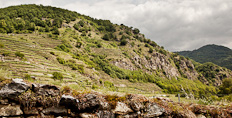- Delivery
- Price List
-
En Primeur
- 2024 Bordeaux latest news
- 2024 Bordeaux vintage report
- 2023 Burgundy releases
- 2022 Burgundy
- 2022 Burgundy vintage report
- 2022 Bordeaux vintage report
- 2022 Bordeaux latest news
- 2022 Bordeaux releases
- 2021 Burgundy vintage report
- 2021 Bordeaux latest news
- 2020 Bordeaux introduction
-
Archived vintage reports
- 2020 Burgundy vintage report
- 2019 Burgundy vintage report
- 2011 Brunello: Neil's trip report
- 2018 Burgundy: Colin's trip report
- 2018 Bordeaux preliminary report
- 2017 Burgundy: Colin's trip report
- 2016 Burgundy: Colin's trip report
- 2015 Burgundy: Colin's trip report
- 2013 Burgundy: Colin's trip report
- 2014 Bordeaux: Colin's trip report
- 2014 Burgundy: Colin's trip report
- Offers
- Unearthed
- New Listings
- Tastings
- Other Stuff
- Buying from us
- About Us
Austria/Hungary/Switzerland
Austria/Hungary/Switzerland

Used to be an empire all of its own, though I'm not sure if that's why the Great Uncorked Taxonomist has lumped them together. As wine countries they have relatively little in common, despite their both having taken the path less travelled by, in the words of the immensely smug poem. Each has its own varieties and styles.
Austria has Gruner Veltliner as its best known contribution to the world and a fantastically versatile one it is. In the hands of people like the Jurtschitschs and Pichlers it rises to heights not much found outside the inner circle of the -Montrachets. There is lovely Riesling too and Pinot Noir and Blaufrankisch for some top reds, while around the southern lakes delectably luscious, often botrytis affected wines are made.
Hungary is a country of two halves. Mad in the north is where Tokaji comes from, the Tokaj area is an ancient source of botrytis affected wines from Furmint and I was told recently has vineyards classified by monks in a way that the Cistercians of Burgundy used as a model. There are also some brilliant dry Furmints. Villany and Szeksard in the south have Kekfrankos (cf Blaufrankisch - see, now you know Hungarian for blue) and Cabernet Franc as well as super whites. None cheap though as you might naively have supposed.
- KamptalAustria has made its name in the UK in recent years with Gruner Veltliner, its own distinctive grape variety. Kamptal is its homeland and along with Riesling the region makes some excellent dry wines on sites very similar to the Wachau. (CW 23/01/12)
- NeusiedlerseeAlmost on the Hungarian border and on the same latitude as Tokaj it cannot be surprising that here you will find some of Austria`s best sweet wines as well as some very good reds. The secret lies in the lake which as with any body of water has an effect of both increasing light intensity and regulating temperature. (CW 23/01/12)
- TokajTokaj is the place, Tokaji is the wine of that place. The local grape variety is Furmint and though you`ll see dry wines made from this it is the botrytis affected whites that are the renowned style. Here the key word to look for on the label is Puttonyos, with 5 or 6 in front of it. Although wines like Sauternes are also made with selected botrytis affected fruit, in Tokaj the rotten fruit is measured in baskets (Puttonyos) and the number of baskets – up to 6 – added to each hundred litres of normal juice determines the quality. (CW 23/01/12)